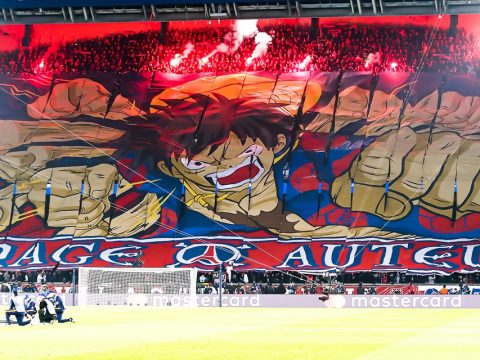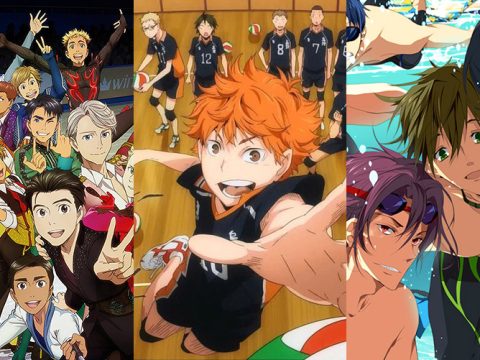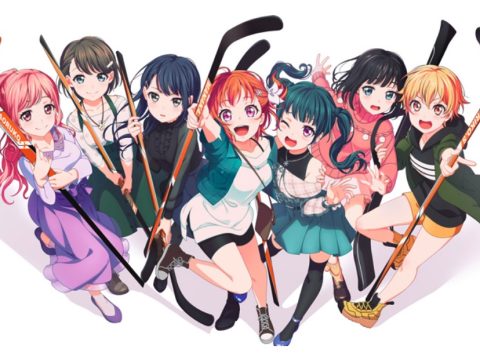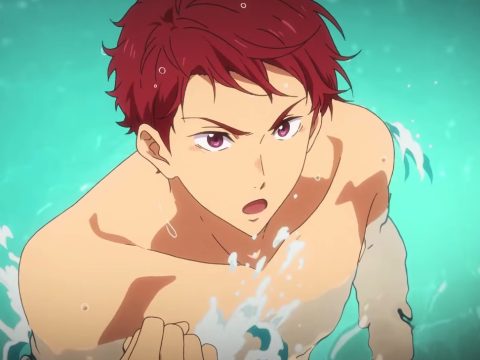Kazuo Koike may be the most respected living manga author of all, but read enough of his manga and you’ll realize that respect comes from the fact that he’s certifiably insane. But he won’t be around forever, so in order to ensure that his manga-fu legacy lives on he took it upon himself to open a school and train students in the mystic arts of how to create hit manga. His most well-known student may be Rumiko Takahashi, but the student that best carries on the master’s spirit, Kazuo Koike’s MOST DANGEROUS student, has got to be Tetsuya Saruwatari.
Chances are you’ve never heard of Tetsuya Saruwatari. If you’ve heard of anything he’s ever done, it’s probably Violence Hero Riki-Oh as a result of the live-action Hong Kong movie from the 1990s. That movie is very faithful to the original manga, but it only covers the first three volumes. There are TWELVE volumes of that! Having earned a sizable cult reputation over the years, the money Media Blasters made off of Riki-Oh helped kick start their Tokyo Shock label to the point where they can now fund such magnificent triumphs of cinema as The Machine Girl, Tokyo Gore Police, and Robo Geisha. All of those embody the spirit of Riki-Oh and by extension Tetsuya Saruwatari, so if you dig that special brand of crazy ultra-violence then you definitely want to look into his manga.
But the most enduring work of Tetsuya Saruwatari is only slightly less insane than that: Koko Tekken-den Tough, later shortened to just plain ol’ Tough after a brief hiatus, practically says what it’s all about in the name. Our hero, Kiichi “Kiibo” Miyazawa, is representative of the target demographic for this comic: he’s a rebellious horndog of a high school student with initial dreams of being an action movie star. But where Kiibo differs from the readers is that he happens to be a lifelong practitioner of a secret style of mixed martial arts intended for killing one’s opponents. Kiibo’s no murderer though. He prefers to just cripple and permanently maim because hey, with great power comes great res—aw, who am I kidding? In a show of how old this manga is, when it first starts off he’s got a poster of Jean-Claude van Damme from the first Universal Soldier movie. That’s because Tough has been running for over 16 years in the weekly seinen manga anthology Young Jump, and to date there are nearly 70 collected volumes worth with no end in sight. Even One Piece is “only” around Volume 56 at the moment!
What separates shonen martial arts series such as Kenichi: The Mightiest Disciple from seinen fare like Tough is the level of visualized brutality and crude toilet humor depicted. By the second page of the first chapter of Tough there are already people threatening Kiibo that they’ll “snap off your dick and strangle you with it.” Two pages later, Kiibo has caved in someone’s knee with a kick and fish hooked someone else. That means sticking his finger into their nose then yanking forward and tearing through. A few pages later Kiibo sees someone watching him as he’s on the toilet, so he chases him down and tackles him, pants around his ankles, his penis slapping against his stomach as he sprints. This is how the manga STARTS, and it only ratchets up from there.
If it all sounds rather similar to the other behemoth of martial arts manga, Grappler Baki aka Baki the Grappler which is serialized in Shonen Champion, that’s no accident. Baki is basically Tough with less nudity. Think of Baki and Tough as the Coke and Pepsi of martial arts manga. Alas, in America we only buy the Dasani and Aquafina. For in America, anything that toes the line between shonen and seinen tends to end up having no significant audience. With its built-in tournament fighting setup, “I want to be the strongest” characterizations, suspended sense of realism, near-total lack of female characters, and artwork that just isn’t “pretty” enough for the fujoshi to sink their talons into, Tough finds itself catering to a cartoons-watching / comics-reading demographic that largely doesn’t exist in this country. It’s too crude and violent to be “for kids,” too silly and simplistic to be “for adults,” not realistic enough “for sports fans,” and “not gay enough in the right way” for the ladies. It’s a lot like Hajime no Ippo aka Fighting Spirit in that sense.
That’s not to say no attempt was made in America. Tough was adapted into a 3-part animated OAV that was released in the US under the name Shootfighter Tekken by Central Park Media. Nobody in America bought it because CPM released it across 3 DVDs, with one episode per disc. Also, because having “Tekken” in your name is synonymous with “this totally sucks” as far as most gamers are concerned. Still, despite not being quite as graphic or vulgar as the manga the anime is actually pretty darned good. For a more in-depth review of the anime, I recommend listening to this podcast because I was on it. The anime may have been done in by an ill-advised release scheme, but that’s nothing compared to the treatment the manga got in America. Six volumes of the original Koko Tekken-den Tough manga series were released by Viz under their defunct “Editor’s Choice” label, but several chapters were skipped over entirely. For instance, chapter 2 of the Japanese release isn’t in the Viz release at all. They went straight from Chapter 1 to Chapter 3, renaming the original Chapter 3 to Chapter 2 in the process. Plus, the first and last pages of every chapter, the pages with the chapter titles on them, were excised. So they just slapped the chapter title over the next page of the story where no titles were originally. How much was skipped over? Think of it this way: Chapter 12 of the Viz release is actually Chapter 39. I can’t fathom why, but sales of the Viz release of Tough weren’t good at all! Sure enough, they took these low sales as a sign that “well, guess there’s no audience for this sort of thing!” I’m sure the haphazard release treatment has nothing to do with it. Really, who in the heck was responsible for such a travesty of a mistreatment, anyway? Oh wait, I think half of them now are the editors for this very magazine…
Regardless, the US release of Tough might have just been before its time. Mixed martial arts wasn’t the big business it’s since become within the last five years, and the fans of MMA don’t seem to overlap much with fans of anime and manga. Indeed, followers and practitioners of mixed martial arts would likely write off Tough as a joke, especially in the early volumes with its “pro wrestling vs MMA” storyline and less than genuine depiction of MMA holds and techniques. Part of this is simply the result of being a product of its time. When Tough was first published back in 1993, there was no such thing as UFC (not counting the first show that didn’t have global distribution where nobody knew what they were doing), PRIDE Fighting Championship, or any of the other MMA promotions of note. The closest idea anyone had to what a “shoot fight” looked like were the more realism-based professional wrestling organizations such as UWFi which, despite not actually being real, was home to many of the pioneers of modern MMA such as Nobuhiko Takada and Kazushi Sakuraba. As the years went on and true MMA became part of mainstream sports, the fights in Tough began to become more closely patterned after actual fights, albeit still hyper-exaggerated for the sake of being exciting. Hey, if people can buy the idea of Jason Bourne kicking a guy’s butt using a freaking rolled-up magazine for a weapon, they should be down with Kiibo fighting against a knife fighter in a bamboo forest using only his T-shirt as a makeshift whip.
Over the decades, Tetsuya Saruwatari has crafted an empire on the power of tales of two-fisted, bloody knuckled vengeance. Despite being highly, highly prolific and having made not just one but several long-running manga hits for decades, his name remains unheard of in America. With the Viz edition of Tough being years out of print, the only way to read any of Saruwatari’s works are via online fan translations of his manga. Right now, you can read all of Riki-Oh and several volumes worth of the original Tough as well as its sequel. Sadly, until the unforeseeable future day comes when enough American manga fans exist to justify commercially releasing this type of entertainment that’s the way it’ll stay.







